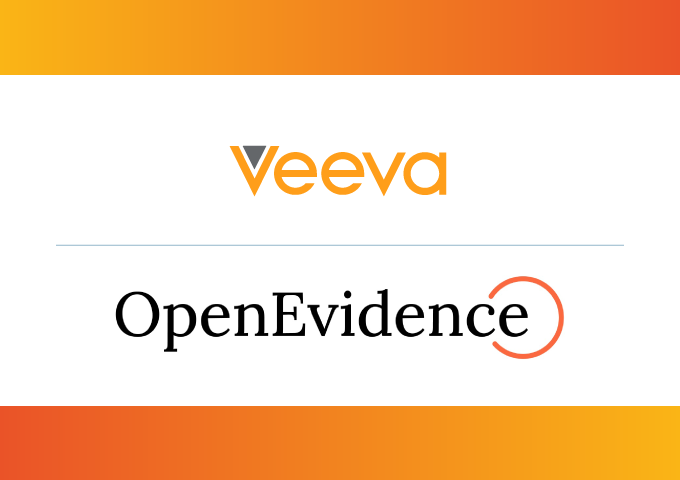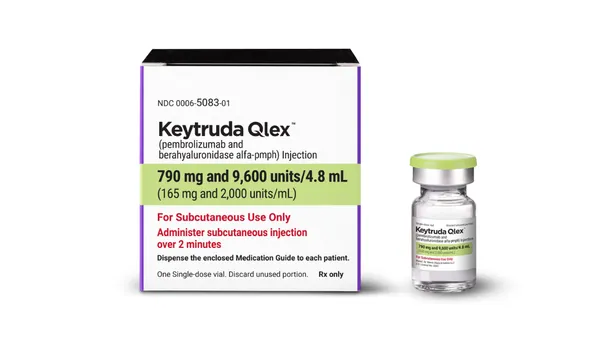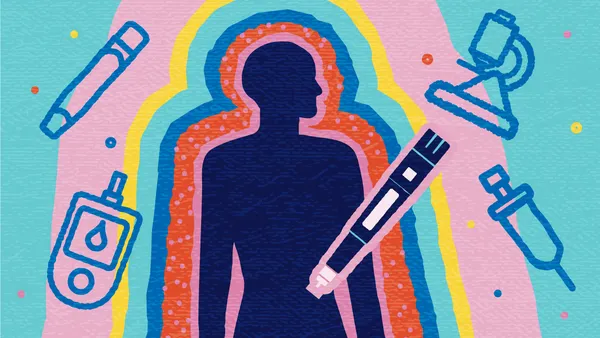Pharma trax Sales, marketing, And R&D Trends affecting the healthcare industry Approval of Innovative Drugs Increase in 2003 An increase in overall drug and biologic approvals for calendar year 2003 has been reported by the Food and Drug Administration (FDA). In addition, regulatory officials say there has been a decrease in the time it took the agency to review and approve most applications. Approvals of new molecular entities (NMEs), drugs with active ingredients never before marketed in the United States, increased in 2003 to 21 from the 17 approved in 2002. Priority approvals, approvals for priority products of special medical importance, increased last year as well; 14 priority new drug applications (NDAs) and 9 priority NMEs were reported, compared with 11 NDAs and 7 NMEs in 2002. The agency’s Center for Drug Evaluation and Research (CDER) and Center for Biologics Evaluation and Research (CBER) approved 466 new and generic drugs and biological products, many of which represent significant therapeutic advances. “FDA is making new treatments available more quickly,” says HHS Secretary Tommy G. Thompson. “And I expect the FDA’s new innovation initiatives announced in early 2003 will lead to even faster approvals of safe and affordable medical treatments in the coming years.” Through a series of initiatives introduced in January 2003, plus a continued dedication to timely and complete reviews of every application, the FDA is committed to the goal of reducing the average total time for review before marketing approval by 30 days for priority applications and two months for standard applications. These goals apply to applications submitted in fiscal year 2005 through 2007 and beyond. This correlates to at least a 10% reduction. The first element of the innovation initiative involves a reduction of multiple cycle reviews. FDA is undertaking a root-cause analysis for product approvals that require more than one review cycle and many months of additional development time. Based on the results of this assessment, the agency will take actions to prevent avoidable cycling. New pilot programs also are under way that include earlier communication with product manufacturers. The second element of the innovation initiative involves the implementation of a quality-systems approach to medical-product reviews. Best-management practices are being identified and implemented internally for FDA’s scientific review processes. Additionally, new peer review programs, coupled with more empirical data, allow drug and other scientific reviewers to exchange ideas and use each others’ experience to learn about best practices. Third, FDA is working collaboratively with the National Cancer Institute and other government agencies, academic researchers, healthcare providers, and patients to address key clinical and scientific issues and to clarify regulatory pathways for targeted disease areas and new technologies. Through joint workshops and conferences, the FDA is working to provide clarity to product innovators in these critical medical areas, thereby improving the efficiency and anticipated quality of submitted applications. The FDA has issued specific new guidances on these issues, including guidance on investigational new drug (IND) exemptions for studies of lawfully marketed cancer drug or biological products; guidance on integrating pharmacogenomic testing into the drug-development processes; and draft guidance for reviewers of human somatic cell therapy INDs. The FDA and the NCI also announced a new system for receiving INDs electronically to help foster better and faster innovation in oncology. In addition, the FDA has launched several major initiatives to improve patient access to generic drugs. The agency has introduced new regulations and systems to speed access to generic drugs when legitimate patents expire. In August 2003, a final rule went into effect limiting drug companies to only one 30-month stay of a generic drug’s entry into the market for resolution of a patent challenge. The FDA also has introduced a new system of early communications with generic drug manufacturers who submit applications. The FDA also is using new resources granted by Congress to review generic drug applications more quickly and to develop ways to expand the range of generic drugs available to consumers particularly by facilitating the development of generic versions of drugs that had previously been hard to characterize as equivalent, such as certain creams and inhaled drugs. The FDA also has begun new educational programs and partnerships to help consumers get accurate information about the availability of generic drugs. In addition, the FDA has increased monitoring of generic drugs already on the market. All of these steps to improve access to generics are expected to save consumers more than $3 billion per year. Study Finds 3-D Models Outperform Brochure, Poster, and Audiovisual Presentations Winsby Inc. has released the results of a study that measures the effectiveness of four learning tools: brochure, poster, audiovisual presentation, and 3-D anatomical model. Study results show that people retained the most information when using a 3-D anatomical model. Identical information about cataracts was presented to 20 randomly selected individuals for each learning tool. All were told that they would be completing a brief questionnaire to determine how well they absorbed the material. For the brochure and poster, the respondents were asked to read the material for as long as they felt necessary. Respondents for the 4.5-minute audiovisual presentation and the 3-D anatomical model presentation were required to listen and observe. The answers to all questions were contained in the material on cataracts that they were given to review. To determine baseline knowledge on cataracts, the questionnaire was presented to 20 respondents in telephone surveys. They were not provided an opportunity to review any information about cataracts before responding to these questions. After using one of these tools to obtain identical information about cataracts, respondents answered 12 questions. The average percentage of correct answers from each group of 20 respondents was 95% for the 3-D anatomical model, 78% for the brochure, 72% for the audiovisual presentation, and 71% for the poster. A baseline group scored an average of 44%, without receiving any information about cataracts. “A 3-D model uses every type of learning style to communicate information,” says Debbie Frakes, project manager. “A visual learner sees the model, an aural learner hears the accompanying description, and a kinesthetic learner can touch the model. It makes sense that models would score the highest. We all use our different senses in varying degrees to learn.” Tufts Study Reports R&D Efficiency and Productivity Key Focus for Pharma and Biotech in 2004 In the near term, pharmaceutical and biopharmaceutical firms must improve management of their development portfolios, interact more effectively with the FDA, forge new business alliances, and develop innovative responses to growing public concern in the United States about the cost of prescription medicines. These are the findings of a new report published by Tufts Center for the Study of Drug Development, Outlook 2004. Pharmaceutical companies, facing rapidly rising development costs, are expected to be under growing pressure to decide earlier which drugs in their development portfolios to pursue and which to terminate. This pressure is expected to result in drug developers increasingly pursuing joint ventures and partnering opportunities. In addition, research and development projects will receive greater scrutiny early in development, and pharma companies will increase the use of risk assessment and management methodologies and budgeting and portfolio optimization tools to reduce development times. These measures will help to improve out-of-pocket costs, attrition, and clinical-success rates. Pressure on the FDA to maintain staff expertise is expected to grow as product applications decline and as significant numbers of experienced agency staff retire. An expanding mission, including counterbioterrorism activities, increasing emphasis on harmonizing U.S. and European regulations, and resource-intensive PDUFA III activities, are expected to add to the FDA’s burden. Tufts researchers expect the FDA to expand the scope of diseases and conditions eligible for fast-track designation as a way to triage its workload beyond assigning priority or standard review status to new drug applications. In addition, major new regulatory initiatives are expected to result from the agency’s intent to address emerging technologies, such as gene therapy, combination products, and pharmacogenomic data. In 2004, biotechnology companies will intensify their focus on the development of treatments for serious and life-threatening diseases, especially in oncology, due in part to the availability of fast-track designation, the FDA’s current emphasis on cancer, and the recent change at the agency to indication-based reviews. In addition, the regulatory agency is expected to approve the first antisense oligonucleotide therapeutic for an oncology indication and two monoclonal antibody products that inhibit different growth factors implicated in the pathology of solid tumors. In addition, according to Tuft’s researchers, as pharmaceutical companies increasingly depend on biotechnology companies to improve their pipeline of products, biotechnology companies in the United States and Europe will gain leverage in negotiating strategic partnerships and licensing terms. Continued high and growing healthcare costs are forecasted to spur more innovative relationships between the drug industry and pharmacy benefit and disease managers in 2004, as well as a greater focus on Rx-to-OTC switches at the FDA. Tufts researchers believe that this year at least 10 state Medicaid agencies will establish restricted formularies and expand disease-management programs to cut costs. Private pharmacy benefit managers are expected to be more forthcoming about negotiated prices and rebate pass-throughs to health plans, employers, and beneficiaries due to pressure related to the impending overhaul of Medicare, expected to take effect in 2006. Drug and Biologic Approvals, Reductions in Review Time in 2003 In 2003, CDER approved 72 NDAs, compared with 78 in 2002 and 66 in 2001. Of these NDA approvals, 21 were NMEs, up from 17 in 2002. Priority approvals increased to 14 priority NDAs and 9 priority NMEs in 2003, compared with 11 priority NDAs and 7 priority NMEs in 2002. Median total approval time for CDER’s priority NDAs was 7.7 months, compared with 19.1 months in 2002 (the large difference in the median time to approval is attributed to the effect of a few applications with unusually long regulatory histories in 2002). The median total approval time for standard NDAs was 15.4 months, in line with the previous year’s 15.3 months. In 2003, the median total approval time for priority NMEs was 6.7 months compared with 16.3 months in 2002, which resulted from a few outlier applications with particularly long regulatory pathways. The agency experienced an increase in median approval time for standards NMEs to 23.1 months in 2003 from 15.9 months in 2002 (FDA similarly attributes this increase to statistical outliers and anticipates a return to more standard levels if applications increase in the future). CBER approved 22 biological license applications (BLAs) in 2003, one more than in 2002 and six more than in 2001. Five of these products (6 in 2002) were priority, and their median review time was 12.1 months (compared with 12 months in 2002). Median total approval times for user fee BLAs was 20 months, down from 28 months in 2002, and the median approval time for nonuser fee BLAs dropped to 9 months, from 13 months in 2002. The overall median review time for BLA approvals in 2003 was 12.8 months, compared with 12.9 months in 2002 and 13.8 months in 2001. CDER approved 362 generic drugs in 2003, compared with 384 in 2002. Source: Food and Drug Administration, Rockville, Md. For more information, visit fda.gov. Follow up ePharmaceuticals, Philadelphia, developed by Medical Broadcasting Company, is a provider of optimized news and intelligence that helps executives and teams at pharmaceutical and healthcare organizations make better business decisions. For more information, visit aboutepharm.com. Food and Drug Administration, Rockville, Md., promotes and protects the public health by helping safe and effective products reach the market in a timely way and monitors products for continued safety after they are in use. For more information, visit fda.gov. The Tufts Center for the Study of Drug Development, Boston, is located at Tufts University and provides strategic information to help drug developers, regulators, and policy makers improve the quality and efficiency of pharmaceutical development, review, and utilization. For more information, visit csdd.tufts.edu. Winsby Inc., Lake Forest, Ill., is a market-research firm that specializes in developing sales and marketing programs, based on customer expectations and desires, which are discovered through independent research. For more information, visit winsbyinc.com. CUTTING DEVELOPMENT TIME AND UNPROMISING PROGRAMS WILL HELP IMPROVE R&D RETURNS NEW DRUG DEVELOPMENT TIMES Drug-development time – clinical plus approval phases – has declined since the 1980s (left chart), but so, too, has the number of new drug approvals. Although biopharmaceutical development time has risen steadily (right chart), approvals of new biotech products also grew, reaching a high point in 2000, but declining since. Cutting development time and terminating unpromising development programs early will help improve returns on new drug R&D. Source: Tufts Center for the Study of Drug Development, Outlook 2004, Boston. For more information, visit csdd.tufts.edu. New Biopharmaceutical Development Times According to Debbie Frakes, a project manager at Winsby, 3-D models use every type of learning style to communicate information, which is why these tools scored the highest in a measure of learning-tool effectiveness. Web-based Tools to be Key in Marketing Efforts in 2004 ePharmaceuticals’ annual list of top five predictions for pharmaceutical business innovation in 2004 has forecast an increase in the use of the Internet in marketing strategies. ePharmaceuticals bases its forecast on daily monitoring and reporting of significant achievements and innovations in the pharmaceutical industry during the past 12 months. The predictions, compiled by the ePharmaceuticals editorial staff, cover several e-health categories. Pharma company-sponsored key opinion leader extranets will take on enhanced role. Pharmaceutical brand teams will take a significantly expanded role in developing more sophisticated e-initiatives aimed at physicians and consumers. As a result, there will be a continuing shift in responsibility for e-initiatives away from pharmaceutical company e-business groups to brand teams. Among the key areas for innovation will be the development of key opinion leader extranets. Pharma companies will discover “strategic ubiquity” and expand Web presence. Brand marketing efforts and resources will be deployed well beyond conventional product Websites. Based on research on how users seek healthcare information on the Internet, brand marketers will develop relevant messages and information tailored specifically for many different audiences among consumers, caregivers, and patients. By employing this “strategic ubiquity” a prescription brand’s online presence will include syndicated and sponsored content as well as alliances with advocacy sites and influential third-party sites. Rx-to-OTC switches will grow, pressing pharma companies to offer Web-based consumer-education efforts. There will be an increase in the number of applications for Rx-to-OTC switches supported by sophisticated online consumer information resources to satisfy FDA requirements for more pa ient education on disease and drug treatment options. Recent switches in 2003, such as Prilosec and Claritin, will serve as models for using consumer-health initiatives as a part of the overall marketing campaign for medications newly approved for OTC labeling. Technology will propel remote monitoring as providers advance telemedicine. There will be an explosion of activity in Web-based remote medicine applications, fueled by managed-care organizations eager to cut costs and physician acceptance of newer, easy-to-use monitoring technologies for diabetes and heart disease. Results from expanded online pilot programs will prove the health benefits and cost savings to consumers as well as improved quality of care measurements for managed-care organizations. Consumer demand for more convenient home-based health monitoring technology also will spur the trend forward. Eu DTC ban will continue to force pharma companies to seek alternative marketing channels. While the ban remains in effect, the Internet and other technology platforms, such as mobile phones and wireless hand-held devices will provide plenty of opportunities for pharmaceutical companies to reach out to patients and physicians with relevant product information. Unbranded disease-specific Websites will be just one way that targeted information will get to consumers. 3-D Models Rank No. 1 as Promotional Educational Tool Physician preferences for patient-educational tools Anatomical Models 65% Booklets 26% Wall Charts, Posters 15% Percentage of physicians who are likely to keep each tool Anatomical Models 93% Wall Charts, Posters 63% Other 15% Source: Winsby Inc., Lake Forest, Ill. For more information, visit winsbyinc.com.
An article from











